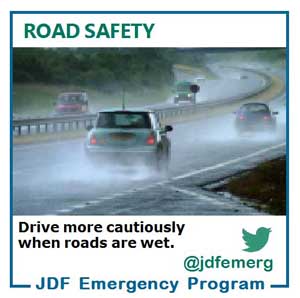Wednesday July 6, 2022 | VANCOUVER ISLAND, BC
by Mary P Brooke | Island Social Trends
National Injury Prevention Day on July 5 was about raising awareness about injuries.
Island Health used the day as an opportunity to highlight that transport-related injuries are just one cause of injury but remain a leading cause of death for children and youth, as well as being a leading cause of hospitalization for adults aged 25 to 34.
Speed, distracted driving and driving under the influence are the primary contributing factors that individuals can control.
According to the BC Injury Research and Prevention Unit, injuries are the number one cause of death for people aged 1 to 44, and the reason for over 35,000 hospital visits and 8,000 permanent disabilities every year in B.C. Most injuries are predictable and preventable.
Simple things to avoid injuries:
“Injuries represent an often overlooked problem, but the real tragedy is that we pay too little attention to the simple things we can do to avoid injuries and the suffering that results,” says Dr. Murray Fyfe, Interim Vice President – Population Health and Chief Medical Health Officer for Island Health.
More driving-related injuries in summer:
“People tend to drive more in the summer, and the clear dry roads can tempt people to drive faster,” says Neil Arason, Injury Prevention and Safety Promotion Lead.
“Add in social gatherings, often with alcohol and now cannabis, and longer days with less sleep and the result is more road crashes.”
What can you do?
Island Health declares that “injuries are not accidents, but outcomes of human-made design and the choices we make as individuals”.
The suggestion is to take actions to lessen your risk of an injury.
That does not, of course, include consideration of ‘the other driver’ and their actions. Preventive-style driving is important but it can’t prevent unexpected occurrences.
Speed, attention and being sober:
Three main suggestions from Island Health are lowering your driving speed, avoid distractions while driving, and of course not being intoxicated or drug-impaired while driving.
Lower your speed.
Small changes in speed produce huge differences in your ability to stop and the force unleashed if you collide. When you go slower, you are less likely to hit a vehicle, pedestrian, cyclist or object, and less likely to cause damage and death if you do collide.
“It’s pretty simple,” adds Arason. “When speed goes up, crashes, injuries and deaths go up. When speed goes down, crashes, injuries and deaths go down.”
Pay attention.
If you’re focused on anything other than your driving, you’re distracted. This is especially true with the use of cell phones.
“Anytime you’re on your phone, you’re distracted from what’s going on around you,” says Arason. “Humans aren’t very good at multitasking, so put away your phone and pay attention to the road.”
Drive sober.
Substances affect your cognition and reaction time. When you drink alcohol and blood alcohol concentration levels go up, your risk of death from injury rises exponentially. Combining alcohol and cannabis compounds your level of impairment and risk. Education programs such as P.A.R.T.Y. (Prevent Alcohol and Risk-Related Trauma in Youth) exist to help youth recognize risk and make informed choices to prevent injury and death.
“The P.A.R.T.Y. program provides students with a realistic look at the impact of poor decision-making and the immediate and long term consequences of trauma,” says Amelia Smit, Injury and Violence Prevention Consultant.
“Research shows that students who attend the program experience less traumatic events, less severe injuries, and a longer time without a traumatic event.”
Stay safe.
This summer, remember that all actions have a reaction and staying safe can be in your control.
“High-risk driving behaviours, like excessive speeding and failing to yield, increase our chances of being in a crash,” says Arason. “The choices we make and behaviours we engage in are what cause injury or keep us safe.”
Learn more about reducing injury:








